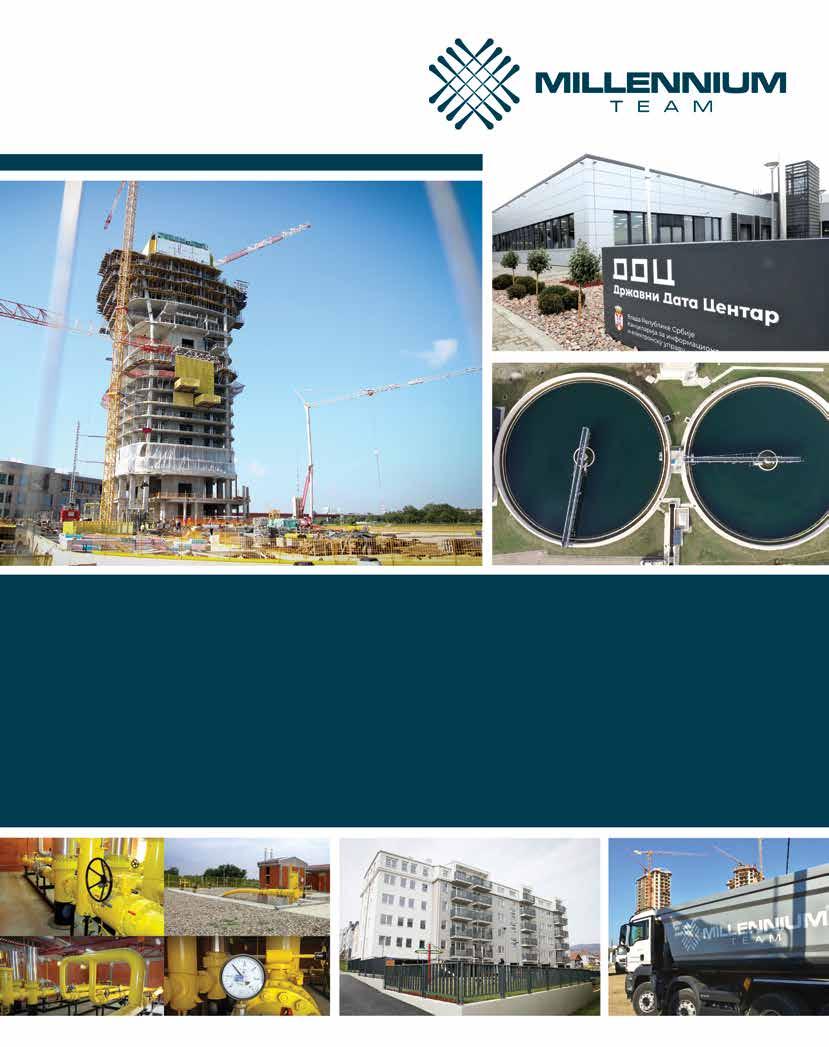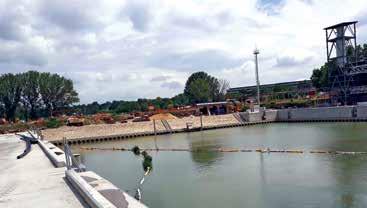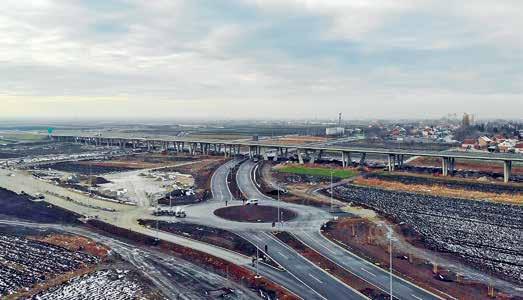
5 minute read
MORE EFFICIENT, FASTER AND SIMPLER
More Efficient, Faster And SIMPLER PROCEDURES
We are witnessing a trend of constant growth in the number of applications for construction permits and approvals for building, as well as the number of issued acts, and this is undoubtedly a result of the simplification, increased efficiency and speeding up of procedures that electronic solutions have brought us
The procedure for issuing construction permits and other acts of the relevant authorities in the process of constructing facilities (from location conditions to usage permits) has been carried out electronically since 1st January 2016, through the Central Register of Administrative Procedures (CEOP), which represents a unique, central, public, electronic database that contains statistics on the course of each individual case according to the requirements related to the construction, extension and reconstruction of facilities, decisions and other acts that arise in the unified procedure, as well as all documentation enclosed and obtained through those procedures.
With the introduction of the CEOP, it has been made possible for applicants - parties - to obtain all required acts in the process of constructing facilities through a unique electronic “one-stop shop system”, where the bodies responsible for issuing these acts collect, on behalf of the party, all necessary documents available through the public records of other bodies, organisations and holders of public jurisdiction. The party is thereby freed from the need to collect all the necessary documentation on their own, while the procedure is also more efficient, faster and simpler for applicants, bearing in mind that all communication between the competent authorities is carried out electronically, via the CEOP.
Serving as an indicator of the extremely positive effects of introducing the CEOP is precisely the improved situation in the area of construction, and that progress can be best seen by drawing a comparison between public statistical indicators before and after its introduction. We would emphasise the fact that there has been a constant growth trend in the number of construction permits and approvals for building, as well as the number of issued acts, since the introduction of the CEOP, which is actually a direct result of the simplification, increased efficiency and speeding up of procedures.
The following table shows the number of issued construction permits and approvals for building in the period since the introduction of the CEOP until today, at the level of the Republic of Serbia, as well as the number of these acts that have been issued by the Ministry of Construction, Transport and Infrastructure.
One-stop counter system for cadastral registration
The e-Counter has simplified and accelerated the procedure for entering cadastral data related to real estate with the competent services, as well as the procedure for calculating and collecting property taxes. With this service, we’ve eased the procedure for applicants, because the competent authorities take action – by submitting and obtaining the documents required to implement the procedure – and the client, as an e-Counter user, has access at any time to the necessary data and information available to them via this service: complete communication history, submitted and processed requests, as well as the current status of the case.
Considering that, in the exercising of their public jurisdictions, public administration bodies and other bodies and organisations make decisions or bring acts that provide the basis for data on real estate to be entered into the competent real estate cadastral services, the e-Counter has made it possible for these bodies and organisations – in their capacity as executors of official submission – to submit these acts to the competent real estate cadastral services.
With the introduction of this information system, parts of activities have been automated, efficiency in processing requests has been increased and the need to visit real estate cadastral services has been reduced. Moreover, via this service the Tax Administrations, Local Tax Administrations and companies responsible for the unified collection of utility services are able to access notarial deeds (and tax returns), which is a way of simplifying the procedure of calculating and collecting property taxes, while land surveying organisations can communicate
electronically, via the e-Counter, with the Republic Geodetic Authority and its narrower organisational units, in accordance with the Law on the Registration Procedure in the Real Estate Cadastre and Plans and the Law on State Survey and Cadastre, in procedures connected to the registration of real estate data.
E-Space
The E-Space project aims to introduce an electronic data exchange system between holders of public jurisdictions in the process of preparing planning documents. The E-Space project will apply a unified procedure in the process of compiling planning documents and represents a reform to the system of real estate public records, as well as the manner and procedure through which planning documents are prepared, which will additionally shorten procedures and end the need to issue location information (this data will be publicly available), while citizens will be better informed about the possibilities and limitations of construction, which enables a timely response in the case that there are possible abuses and construction works that are contrary to the planning document.
The main objective of the E-Space project is to unify information from the real estate cadastre and planning documents, which will be publicly available to everyone in electronic form, making it possible to obtain information for each cadastral parcel on construction possibilities and restrictions, i.e. on the prohibiting of construction. It will also be possible to digitise and update data from the real estate cadastre and process that data quicker, easier and more efficiently, while planning documents will be produced in digital form, on updated bases.
E-Space shortens and accelerates the process of drafting planning documents, thus rendering the stage of collecting data and forming the base information for drafting plans more efficient. The participation of citizens will be more represented and of higher quality, with the enabling of digital insight into planning documents, while interested members of the public and citizens will be able to submit initiatives, remarks and suggestions in digital form, via internet applications.
With the E-Space project it will also be possible to better archive planning documentation and improve accessibility for everyone, which is important given that plans have the force of regulations following the adoption of planning documents. The E-Space project will improve the Central Register of Planning Documents and ease the use of data contained in planning documents.
With the introduction of the e-Counter system, the efficiency of processing requests has been increased and the need to visit real estate cadastral services has been reduced
2016 2017 2018 2019 2020 2021
PERMITS ISSUED BY THE MCTI (SOURCE: CEOP) 113 142 149 321 288 55*
PERMITS ISSUED AT THE NATIONAL RS LEVEL (SOURCE: RS STATISTICAL OFFICE) 12671 18477 19484 21844 22625 4524*










